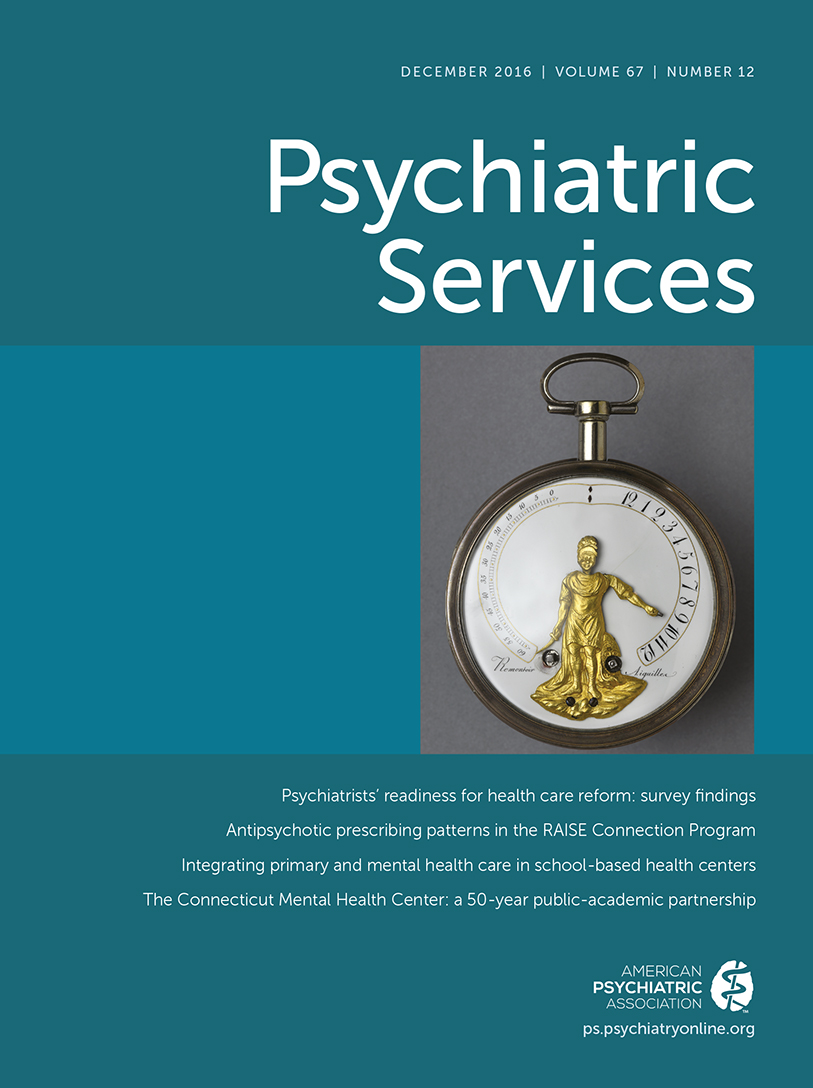Seclusion Reduction in Dutch Mental Health Care: Did Hospitals Meet Goals?
Abstract
Objective:
In 2006, a goal of reducing seclusion in Dutch hospitals by at least 10% each year was set. More than 100 reduction projects in 55 hospitals have been conducted, with €35 million in funding. This study evaluated the results.
Methods:
Data (2008 to 2013) were from a national register. Multilevel logistic regression examined determinants of seclusion.
Results:
Hospital participation in the register ranged from eight in 2008 to 66 in 2013, and admissions ranged from 11,300 to 113,290. The average yearly nationwide reduction of secluded patients was about 9%. Reduction was achieved in half of the hospitals. Some hospitals saw increased rates. In some hospitals where seclusion decreased, use of forced medication increased. Higher seclusion rates were associated with psychotic and bipolar disorders, male gender, and several ward types.
Conclusions:
Seclusion decreased significantly, and forced medication increased. Rates varied widely between hospitals. For many hospitals, more efforts to reduce seclusion are needed.



